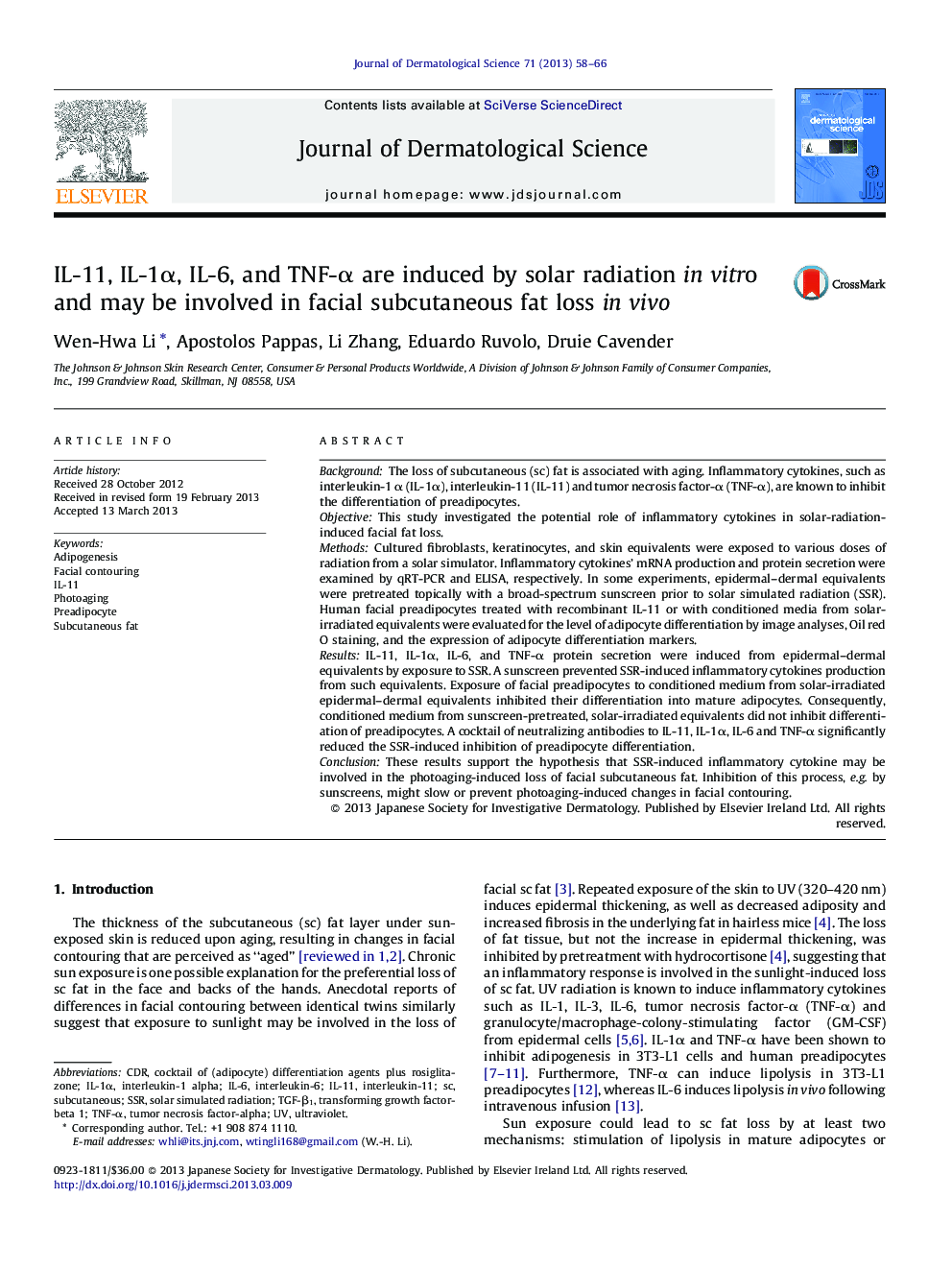| Article ID | Journal | Published Year | Pages | File Type |
|---|---|---|---|---|
| 3212938 | Journal of Dermatological Science | 2013 | 9 Pages |
BackgroundThe loss of subcutaneous (sc) fat is associated with aging. Inflammatory cytokines, such as interleukin-1 α (IL-1α), interleukin-11 (IL-11) and tumor necrosis factor-α (TNF-α), are known to inhibit the differentiation of preadipocytes.ObjectiveThis study investigated the potential role of inflammatory cytokines in solar-radiation-induced facial fat loss.MethodsCultured fibroblasts, keratinocytes, and skin equivalents were exposed to various doses of radiation from a solar simulator. Inflammatory cytokines’ mRNA production and protein secretion were examined by qRT-PCR and ELISA, respectively. In some experiments, epidermal–dermal equivalents were pretreated topically with a broad-spectrum sunscreen prior to solar simulated radiation (SSR). Human facial preadipocytes treated with recombinant IL-11 or with conditioned media from solar-irradiated equivalents were evaluated for the level of adipocyte differentiation by image analyses, Oil red O staining, and the expression of adipocyte differentiation markers.ResultsIL-11, IL-1α, IL-6, and TNF-α protein secretion were induced from epidermal–dermal equivalents by exposure to SSR. A sunscreen prevented SSR-induced inflammatory cytokines production from such equivalents. Exposure of facial preadipocytes to conditioned medium from solar-irradiated epidermal–dermal equivalents inhibited their differentiation into mature adipocytes. Consequently, conditioned medium from sunscreen-pretreated, solar-irradiated equivalents did not inhibit differentiation of preadipocytes. A cocktail of neutralizing antibodies to IL-11, IL-1α, IL-6 and TNF-α significantly reduced the SSR-induced inhibition of preadipocyte differentiation.ConclusionThese results support the hypothesis that SSR-induced inflammatory cytokine may be involved in the photoaging-induced loss of facial subcutaneous fat. Inhibition of this process, e.g. by sunscreens, might slow or prevent photoaging-induced changes in facial contouring.
